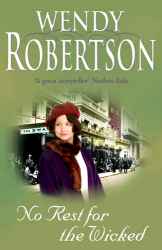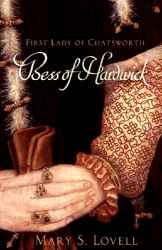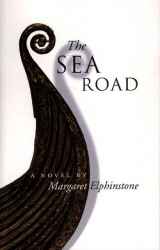Can a novelist whose books are set in the twentieth century claim a sense of history alongside someone who has researched and documented Bess of Hardwick, the second richest and most powerful woman in Elizabethan England (after the Virgin Queen herself)? Can the biographer of the Mitford sisters talk about female characters with someone whose heroine breathes life into a figure from the Icelandic sagas (and is reputed to be the first European woman to have given birth on the American continent)? "It should be a lively debate," promised the Literature Festival programme, suggesting that someone anticipated the answer "no." But as soon as the first guest began to speak, it was clear that the liveliness of the conversation came not from conflict but in a shared interest in writing with a historical element: indeed, said Wendy Robertson, the three of them had already had an interesting conversation that afternoon about that very topic.
The session was chaired by Mandy Green from the University's English Department, who began by congratulating the audience on having found their way to Hild/Bede College's Joachim Room! She invited each of the speakers in turn to respond to the theme of strong female characters firmly placed in a historical period.

Wendy Robertson tackled the question by breaking it down into its elements. The topic History and Me was illustrated with a reading from Family Ties, her current work in progress. The central figure in this novel, which is set in 1991, is a mature student, researching the oral history of the Second World War; this enables the author to deal with two layers of history, because, as she pointed out, although 1991 is the comparatively recent past, it is nonetheless history. She clearly enjoyed the jolt of realisation that this gave the audience. In the passage she read, her heroine attends a lecture, by an American historian ("Imagine me as a 42 year-old man," she asked, and imagine the accent, too), which permitted her to explore more fully the nature of history, and the importance of individual memories and accounts.
As for Women and Me, her tendency to create female central characters, this was not, she said, ideological. Coming from a family of widows, she had been "hard-wired" with the female point of view, whereas to get inside the head of a male character took conscious effort. Nonetheless, she could do it, and a handful of her books even had men as their central characters.
This was not the case for her latest novel, No Rest for the Wicked, although once again, before beginning to read, she invited the audience to imagine her inhabiting another identity, this time as a young French woman describing the crowds who thronged the streets of Paris in 1923, for the funeral of the great actress, Sarah Bernhardt - "the Divine Sarah".
You can download the first chapter of No Rest for the Wicked as a PDF file from Wendy Robertson's web site.

Mary S. Lovell did not have to invent a redoutable heroine for her book about Bess of Hardwick, for she is a writer of biographies. She writes mainly about strong and independent women, and admits that though she has written about men, she is never absolutely confident that she has understood their motivation correctly.
Rather than read out a passage of her book - explaining modestly that the minutiae of biography do not really lend themselves to this - she gave an overview of the lady's turbulent life. Bess was the fifth of six daughters of an impoverished Derbyshire nobleman who died before her first birthday: yet by the time she died she was one of the richest and most powerful women in the country. She survived four husbands, the first in her early teens leaving her "a virgin widow". In an age of religious and dynastic turmoil (by the time Bess's first child, Frances, was six years old, three of her godparents had been beheaded), and despite being close enough to the political centre to be the warden of Mary Queen of Scots, Bess's survival must be the mark of a shrewd operator.
Although Mary Lovell did not read out her own words, she was able to share some written material: a number of Bess's letters survive, and she read out two of them. The biographer's subject spoke across the centuries as eloquently as any novelist's invented heroine.

Margaret Elphinstone did not have to invent the heroine of her The Sea Road "My first involvement with formidable Viking women," she said, "was when I was working in Shetland libraries in the 1970s." This was not a reflection on her colleagues or clients, but her first encounter with the sagas. She was particularly struck by Gudrid, who was depicted as being "incredibly good - with the emphasis on incredibly". From this observation it was a natural progression to wondering about the inner life of such a woman, and then to recreating it herself. And she read out a passage in which the child Gudrid sits by the fire, listening to the tales of Eirik the Red.
Margaret Elphinstone's most recent book, Voyageurs, had given her a new perspective on herself as a creator of female characters: it was written from a male viewpoint. Set in Canada, during the 1812 War with the United States, it tells of a Quaker missionary who is captured by Native Americans, and her brother's quest to rescue her. Originally she had intended the woman for her central figure, but realised that it wasn't her story, but her brother's. The experiment seems to have succeeded: "I got very fond of him, being a man for a year or two!" She had the help of some "expert" (i.e. male) readers, who suggested some pre-publication changes, particularly in the love scenes.
The general discussion that followed ranged far and wide, from Singapore to Newfoundland. A book might have its origin - and Margaret Elphinstone apologised for this, "It's so corny I don't want to admit it; I had a dream...", and having seen a woman on the shore in a state of great distress, had to write Voyageurs to find out what had happened to her. It might come from serendipity, from talking to people or being told a story, as had Wendy Robertson's The Long Journey Home about Singapore under the Japanese occupation; although the anecdote which had piqued her interest did not occupy the centre of the book, and had been followed by substantial work of both scholarship and imagination. Mary Lovell also pointed out, practically, that fashion also counted for something in arousing a publisher's interest in a book: "History seems to be a bit passé at the moment," she remarked, "When I wrote Bess, history was the new cookery!"
 |
 |
| Previous report: Kitty Fitzgerald, Joolz Denby & Cathi Unsworth |
Next Report: Mozart's Women |

